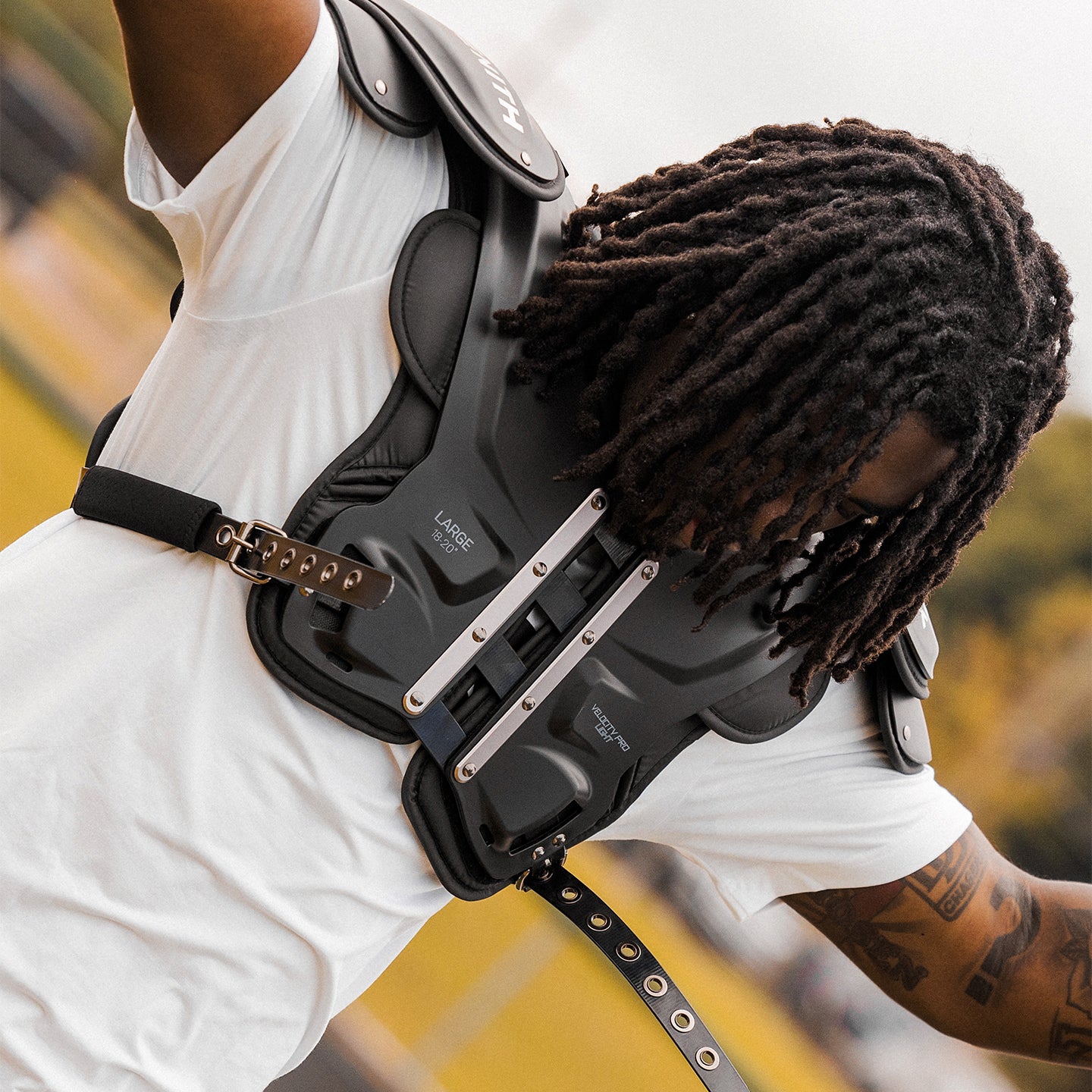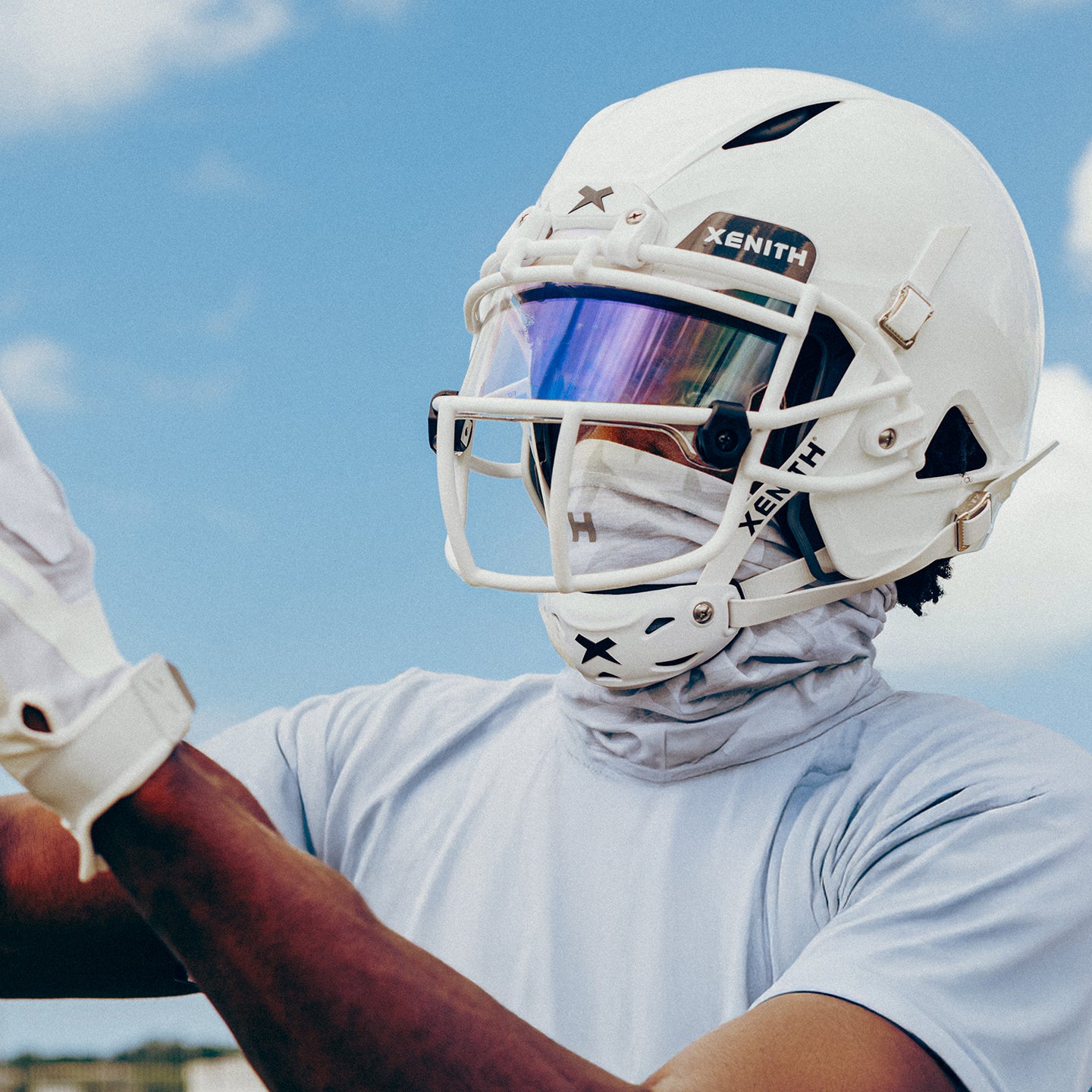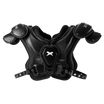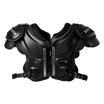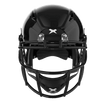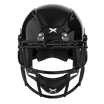Scientific Advisory Board
Mission Statement
Xenith's Scientific Advisory Board brings together independent experts in athlete health, brain science, and sports technology to ensure all Xenith product is driven by leading-edge scientific research and grounded in rigorous R&D. Board members advise the Xenith executive team on ground-breaking research, state-of-the-art care, and the next horizon of scientific development in athlete health and performance. The Board provides strategic guidance for Xenith's scientific research efforts and identifies opportunities for product innovation in line with Xenith's commitment to providing the best protective solutions to athletes at all levels of competition.
Meet the Board Members
Darryl Conway, MA, AT, ATC

Senior Associate Athletic Director, Student-Athlete Health and Welfare, University of Michigan Athletics
Darryl Conway oversees Student-Athlete Health and Welfare for University of Michigan Athletics, which includes athletic medicine, performance science, nutrition, athletic counseling, Olympic strength and conditioning, and equipment operations. He also serves as the liaison to U-M team physicians. Mr. Conway came to the University of Michigan in 2013 from the University of Maryland, where he served as the Assistant Athletic Director for Sports Medicine. Prior to Maryland, he worked full-time as an athletic trainer at the University of Central Florida, the University of Northern Iowa, Morgan State University, the University of Delaware, and the New York Jets Football Club. Mr. Conway holds a Masters’ Degree from Adelphi University in Sports Medicine and Sports Management and a Bachelors’ Degree from the University of Delaware in Physical Education Studies and Athletic Training.
Mehmet Kurt, PhD

Assistant Professor of Mechanical Engineering, Stevens Institute of Technology & Adjunct Assistant Professor, Translational Molecular and Imaging Institute, Icahn School of Medicine at Mount Sinai
Mehmet Kurt directs the Kurtlab at Stevens Institute of Technology, where he researchs brain biomechanics and neuromechanical imaging. His research group is currently sponsored by multiple grants from NSF and NIH. His awards include NSF Vizzies Best Scientific Visualization Award, People's Choice (2018), Annals of Biomedical Engineering "Editor's Choice Award" (2017), Thrasher Research Foundation Early Career Award (2015) and the Thomas Bernard Hall Prize for the Best Paper of the Year (2011). His research has been highlighted in various media outlets, such as Reuters, Newsweek, CBS News, and Washington Post. Dr. Kurt received his Ph.D. in Mechanical Science and Engineering from the University of Illinois at Urbana-Champaign on developing novel nonlinear system identification methods. He completed his postdoctoral work in the Departments of Bioengineering and Radiology at Stanford University.
Matthew Lorincz, MD, PhD

Clinical Associate Professor of Neurology, University of Michigan & Co-Director, Michigan NeuroSport, Michigan Medicine & Co-Director, Michigan Concussion Center Clinical Core, University of Michigan
Matthew Lorincz is a board-certified sports neurologist specializing in the treatment of acute concussions, the long-term consequences of concussion, and the management of neurological disorders in athletes. In addition to co-directing the Michigan NeuroSport clinic and the Michigan Concussion Center Clinical core, he is a team physician for University of Michigan, Eastern Michigan University, USA Hockey, and US Ski and Snowboard. Dr. Lorincz’s research interests include optimizing recovery from sport-related concussion, investigating quantitative biomarkers for objective concussion diagnosis and safe return to sport, and investigating the long-term risk of chronic traumatic encephalopathy (CTE) from sport. Dr. Lorincz earned his MD and PhD at Wayne State University and completed residency and fellowship training in the Department of Neurology at the University of Michigan.
Jennifer Sacheck, PhD, FACSM

Sanofi Professor of Prevention and Wellness and Chair, the Department of Exercise and Nutrition Sciences, The Milken Institute School of Public Health, The George Washington University & Adjunct Professor, Friedman School of Nutrition Science and Policy, Tufts University
Jennifer Sacheck is a nutrition scientist, physical activity expert, and author. Her research focuses on the impact of both diet and physical activity on health outcomes, with an emphasis on pediatric health disparities. Recent work includes examining the impact of school-based “coaches” from low-income communities on improving physical fitness, physical activity, and socio-emotional learning among underserved middle school children. Dr. Sacheck is a Fellow of the American College of Sports Medicine, where she serves on advisory committees on national health policy and youth sports and health initiatives. She also was an appointed member of the National Academy of Sciences committee on Fitness and Health Outcomes in Youth. Dr. Sacheck earned her Ph.D. in Nutrition Science from Tufts University and completed her postdoctoral training from Harvard Medical School.
Jessica Deneweth Zendler, PhD

Sport Technology Consultant, Zendler Scientific & Adjunct Research Assistant Professor, School of Kinesiology, University of Michigan
Jessica Zendler is a biomedical engineer, kinesiologist, and sport technology expert. She specializes in the application of biomechanics to enhance athlete health and performance. Her research interests include understanding the role of biomechanics in injury development, developing movement-based markers to assess athlete resiliency and readiness, validation and evaluation of sport technology, and integrating sport technology into comprehensive athlete management. Dr. Zendler previously served as the Chief Scientific Officer at Impellia, where she directed scientific research and development for their sport performance platform. Prior to Impellia, she directed the Michigan Performance Research Laboratory in the School of Kinesiology at the University of Michigan. Dr. Zendler received her PhD in Mechanical Engineering and Kinesiology from the University of Michigan.
Research
Video Analysis of Head Impact Parameters in Youth Football
Gyemi DL, Lovis ER, Town CM, Jadischke R, Andrews DM. Video analysis of head impact parameters in youth football. XXVII Congress of the International Society of Biomechanics and 43rd Annual Meeting of the American Society of Biomechanics – Calgary: 2019.
While a large amount of research has been focused on professional, college, and high school football, very little is known about how and when head impacts occur in youth football. This information is critical for designing helmets that are optimized for youth athletes. This study represents the first examination of head impacts in youth tackle football using gold-standard video methods. Researchers recorded games played by Mite (4-5 years), Tyke (6-9 years), and Atom (9-12 years) teams using stationary action cameras placed around the football field. They recorded details about each head impact (e.g., frequency, type, mechanism, source, location on head, etc.). This is an ongoing study, but early results suggest that head-to-ground impacts were the most common type of head impact (versus head-to-head or head-to-body impacts). Researchers also found that helmet impact locations differed among the three age groups. This suggests that as players progress in their tackling technique they may experience different types of head impacts, which should be considered in helmet design.
Read the full "Video Analysis of Head Impact Parameters in Youth Football" article.
Presenting Safety Messages Using a Multi-Channel Approach
Hall SM, Frantz JP, Zendler JM, Goulet GC. Xenith presents safety messages using multi-channel approach. 3rd Annual Boston University Chronic Traumatic Encephalopathy Conference: 2018.
All tackle football helmets are required to carry specific warning labels, but manufacturers can provide additional labels to better inform consumers. We partnered with Applied Safety + Ergonomics (Ann Arbor, MI) to develop a series of science-driven safety communications for players and families to learn about the risk of head injury from tackle football and to discover opportunities to limit this risk. Researchers investigated the latest scientific literature about head health in football to determine the most critical information to share with athletes, parents, and coaches, which included specifically addressing concerns about Chronic Traumatic Encephalopathy (CTE). Labels were systematically tested with players and parents to identify optimal placement in the helmet and ensure the safety messages were understandable. In addition to the labels, an online Safety Briefing for parents and players to access the latest scientific findings about head health safety in tackle football was created to be an up-to-date resource for players and parents.
Read the full "Presenting Safety Messages Using a Multi-Channel Approach" article.
Development of a Methodology and Preliminary Analysis of Head Impacts in American 7v7 Non-Tackle Football
Jadischke R, Zendler J, Lovis E, Elliott A, Goulet GC. Development of a methodology and preliminary analysis of head impacts in American 7-v-7 non-tackle football. Proceedings of the IRCOBI Conference-Florence: 2019. 615–6.
Video methods have been used to gather important information about head impacts in professional football, soccer, rugby, and Australian rules football. We adapted these methods to study head impacts in youth sports. Researchers conducted simulated head impacts outdoors using dummies to test different camera settings and distances from action. The speed and energy of head impacts was calculated using advanced computer methods (3-D model-based image matching), which uses software to track the position and rotation of the head. To verify the accuracy of our method, we compared our results to gold-standard reference data. Errors with our method were similar to previous studies in professional sport (±0.24% m/s for linear velocity, ±3.4% rad/s for rotational velocity). We tested this method during live 7v7 tournament games where we placed 15 cameras around the field to record all head or body impact plays.
Quantitative and Qualitative Analysis of Head and Body Impacts in American 7v7 Non-Tackle Football
Jadischke R, Zendler J, Lovis E, Elliott A, Goulet GC. Quantitative and Qualitative Analysis of Head and Body Impacts in American 7v7 Non-Tackle Football. BMJ Open Sport and Exercise Medicine: 2019. In Review.
The objective of this study was to expand current understanding of head contact in competitive non-tackle American football. While head contacts have been studied in tackle football, very little research has happened for non-tackle football, especially for youth and high school players. This study represents the first examination of head impacts in non-tackle football using gold-standard video methods. Researchers filmed 48 elite 7v7 tournament games played by 12U, 14U, and high school teams and documented every head impact, including the location on the head, the type of play, and where it occurred on the field, suing previously-validated methods . They used advanced 3-D model-based image matching to estimate the speed and energy of typical head impacts. The incidence rate of head contact was found to be low (3.5 head contacts per 1000 athlete-plays). 75% of head contacts were caused by a head-to-ground impact, while head-to-head contacts were uncommon. Most contact occurred to the upper rear or side of the head. Head-to-ground impact was associated with a maximum pre-impact head speed of 5.9 ± 2.2 m/s and a change in head speed of 3.0 ± 1.1 m/s.
Analysis of Neiss Head Injuries among Youth in Selected Sports
Non-tackle football (7v7, flag, touch) has more participants in the US than tackle football, yet hardly any research has been done to understand the types of injuries in the sport. While it is generally believed that sport poses a lower injury risk than other contact sports, it is important to have research to quantify the nature of non-tackle head injuries. Researchers at Applied Safety + Ergonomics, in partnership with Xenith, analyzed NEISS injury reports from 2014 to 2018 for patients 6-18 years old who reported head or face injuries related to non-tackle football (organized or unorganized, flag or touch). NEISS is a publicly-available dataset that gives a national sampling of patients presenting to US emergency rooms. They extracted injuries reported for basketball, soccer, and tackle football during the same time frame and compared them to non-tackle football. Since the number of athletes participating in each sport nationwide varies, they used Sports and Fitness Industry Association (SFIA) single-sport participation reports to compare injury incidence across different sports. Head and face injury rates for non-tackle football were lower than for soccer, basketball, or tackle football. The most common areas of injury in non-tackle were the head or the face, while eye, ear, and mouth injuries only occurred in 10% of cases. The most common injury reported was a laceration (cut). Concussions occurred in non-tackle football but were less frequent than the other sports. Head and face fractures were lowest in non-tackle football, with basketball and tackle football reporting 2.3 and 1.7 times higher rates, respectively.
Read the full "Analysis of Neiss Head Injuries among Youth in Selected Sports" article.

